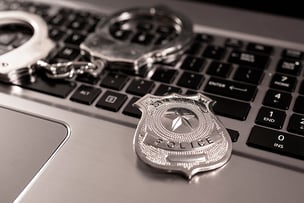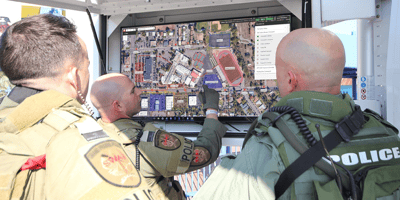Blog
How the Right CAD Can Improve Communication with Law Enforcement, Fire, and EMS Departments
Emergency personnel work tirelessly to improve the safety of their communities. But gaps and glitches in communication between dispatchers and first responders can hinder these efforts by delaying response—and the consequences can be drastic.
In any high-stakes situation, minutes or even seconds can make a dramatic impact on the outcome. To ensure accuracy, quicker response times, and the best possible outcomes, communication gaps between dispatchers and responders need to be mitigated as much as possible.
Traditionally, law enforcement officers and emergency personnel in the field have received information from dispatch via radio. With the evolution of mobile law enforcement software that integrates fully with computer-aided dispatch (CAD) systems, communication can now be seamless and instantaneous.
Facilitating seamless communication between dispatchers and first responders requires implementation of a centralized, integrated dispatch software that reduces the opportunity for miscommunication and eliminates wasted time and duplicated efforts.
When equipped with a comprehensive CAD solution featuring an intuitive interface, dispatchers are better prepared to efficiently gather and quickly transfer necessary information—including the nature and location of the emergency and how many responders are needed—to the correct departments. Improving the efficiency of dispatch operations saves time and improves the safety of everyone involved.
The right CAD software can also:
- Help improve recordkeeping and information flow by providing fire, law enforcement, and EMS departments with access to incident data in real time
- Streamline reporting and reduce potential for error by auto-populating common data fields
- Provide insight into trends, which helps inform operational decisions
- Search and query historical data to analyze aspects of community safety from a data-driven perspective
Reducing response times helps minimize property damage due to fire, improve outcomes for those requiring emergency medical care, and hastens the de-escalation of potentially dangerous situations. Streamlining communication between dispatch and responding agencies not only increases the accuracy of data and speed of dissemination but also improves response times, resulting in a better served and safer community.
More from the blog
View All Posts.jpg?width=400&height=203&name=Slashed%20Header%20for%20Guard%20Tour%20for%20Checkpoint%20Options(3).jpg)
Understanding Checkpoint Tag Options in Digital Guard Tour Systems
Read More
How Law Enforcement Agencies Can Leverage Regional Data Sharing to Create a Force-Multiplier
Read More
5 Advantages of Combining CAD and Command & Planning Software
Read MoreSubscribe to email updates
Stay up-to-date on what's happening at this blog and get additional content about the benefits of subscribing.
